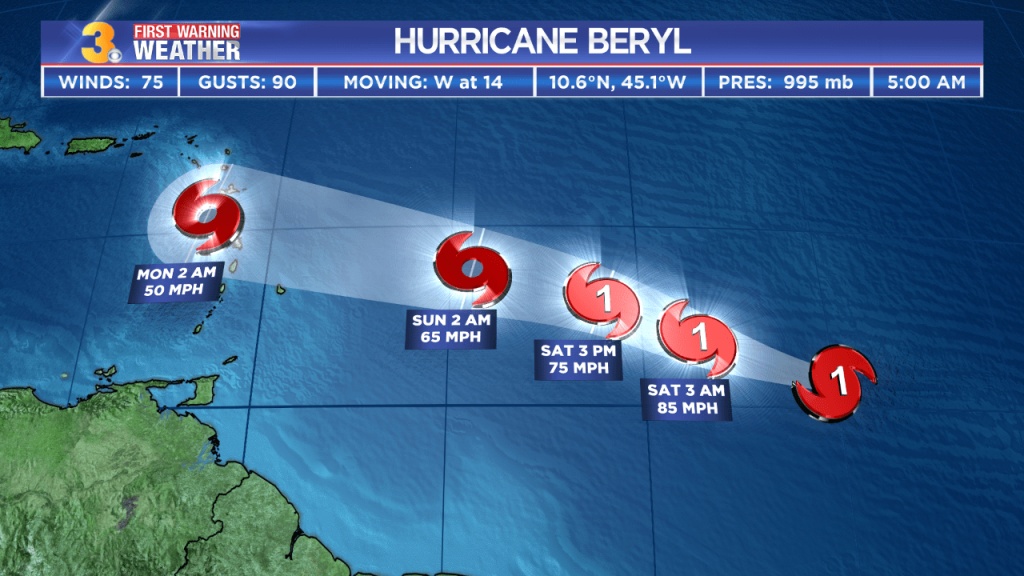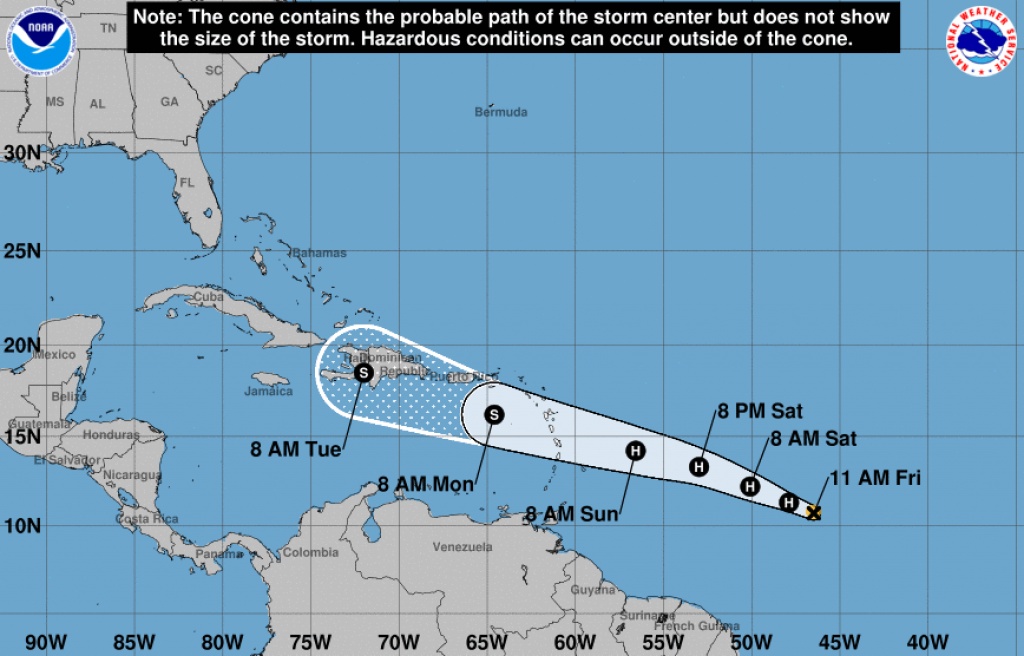Hurricane Beryl’s Impact on Barbados

Hurricane beryl barbados – Hurricane Beryl was a powerful tropical cyclone that impacted Barbados on August 18, 2018. The storm passed directly over the island, bringing with it strong winds, heavy rainfall, and storm surge. The hurricane caused significant damage to infrastructure, property, and agriculture, and also resulted in power outages and water shortages.
Hurricane Beryl is a reminder that the Atlantic hurricane season is upon us. With the storm threatening Barbados, residents are being urged to take precautions and stay informed about the latest hurricane watch information. While Beryl is expected to weaken as it approaches the island, it is still important to be prepared for any potential impact.
Areas of Impact
The areas of Barbados that were most severely affected by Hurricane Beryl were the southern and eastern parishes. These areas experienced the strongest winds and heaviest rainfall, which led to flooding and landslides. The storm surge also caused significant damage to coastal areas, including the destruction of homes and businesses.
Damage Caused
Hurricane Beryl caused extensive damage to Barbados’ infrastructure, property, and agriculture. The storm damaged or destroyed hundreds of homes and businesses, and also caused significant damage to roads, bridges, and other infrastructure. The agricultural sector was also hard hit, with the storm causing widespread damage to crops and livestock.
Hurricane Beryl brought heavy rainfall and strong winds to Barbados, causing widespread flooding and power outages. The storm’s impact highlights the importance of staying informed about hurricane forecasts. For the latest updates on Hurricane Beryl and other potential storms, visit our hurricane forecast page.
- Infrastructure: The storm damaged or destroyed hundreds of homes and businesses, and also caused significant damage to roads, bridges, and other infrastructure.
- Property: The hurricane caused extensive damage to property, including homes, businesses, and vehicles.
- Agriculture: The agricultural sector was hard hit, with the storm causing widespread damage to crops and livestock.
Response and Recovery
The government of Barbados quickly responded to the devastation caused by Hurricane Beryl. Emergency responders were deployed to the affected areas to provide assistance, and the government also provided financial assistance to those who had been impacted by the storm. The recovery process is ongoing, and the government is working to rebuild the damaged infrastructure and restore essential services.
Emergency Response and Recovery Efforts: Hurricane Beryl Barbados

In the wake of Hurricane Beryl’s devastating impact on Barbados, the government and relief organizations swiftly mobilized to provide emergency response and recovery assistance. These efforts aimed to address the immediate needs of affected communities, mitigate further damage, and facilitate the long-term rebuilding process.
Emergency Response Measures
- Evacuations and Shelters: The Barbadian government ordered mandatory evacuations for vulnerable coastal areas and established emergency shelters to provide refuge for displaced residents.
- Infrastructure Assessment: Engineers and emergency personnel conducted thorough assessments of damaged infrastructure, including roads, bridges, and power lines, to identify critical areas requiring immediate repair.
- Medical and Health Services: Medical teams and mobile clinics were deployed to affected areas to provide medical assistance, distribute supplies, and prevent the spread of disease.
Challenges Faced by Emergency Responders, Hurricane beryl barbados
Emergency responders faced significant challenges in providing aid and assistance to affected communities:
- Impassable Roads: Hurricane Beryl caused widespread flooding and debris, making it difficult for emergency vehicles to reach isolated areas and deliver essential supplies.
- Communication Disruptions: Power outages and damaged communication infrastructure hindered communication between emergency responders and affected communities, slowing down coordination efforts.
- Limited Resources: The scale of the damage overwhelmed local resources, necessitating external assistance from regional and international organizations.
Recovery Efforts
In the aftermath of Hurricane Beryl, the government and relief organizations initiated comprehensive recovery efforts to restore infrastructure, rebuild communities, and provide ongoing support to affected residents.
- Debris Removal: Heavy machinery and manpower were deployed to remove debris from roads, buildings, and public spaces, facilitating access and restoring normalcy.
- Infrastructure Repair: Engineers and construction crews worked tirelessly to repair damaged roads, bridges, power lines, and other essential infrastructure, restoring connectivity and vital services.
- Community Rebuilding: Community-led initiatives and government programs focused on rebuilding homes, schools, and community centers, providing shelter and stability for affected residents.
Long-Term Impacts and Lessons Learned

Hurricane Beryl left a lasting impact on Barbados, affecting its economy, society, and environment. The lessons learned from this event provide valuable insights for future hurricane preparedness and response efforts.
Economic Impacts
- Damage to infrastructure and property, including homes, businesses, and tourism facilities.
- Loss of revenue from tourism and other industries.
- Increased government expenditure on recovery and rebuilding efforts.
Social Impacts
- Displacement and loss of homes.
- Psychological trauma and stress.
- Disruption of education and healthcare services.
Environmental Impacts
- Coastal erosion and damage to coral reefs.
- Flooding and landslides.
- Loss of vegetation and biodiversity.
Lessons Learned
Hurricane Beryl highlighted the importance of:
- Early warning systems and evacuation plans.
- Building codes and land-use regulations to reduce vulnerability.
- Community resilience and preparedness.
- International cooperation and assistance.
Recommendations
To improve hurricane preparedness and resilience in Barbados, it is recommended to:
- Invest in early warning systems and evacuation plans.
- Strengthen building codes and land-use regulations.
- Promote community resilience through education and training.
- Foster international cooperation and partnerships for disaster response.